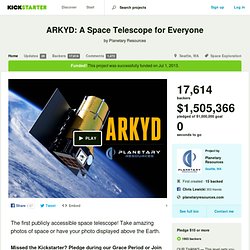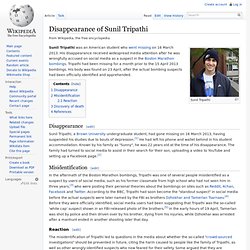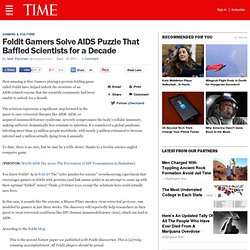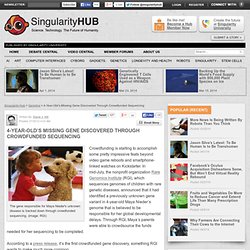

Now You Can Help Scientists Track Animals in Mozambique From Your Sofa. Turn Your Smartphone Into A Particle Detector For Cosmic Rays. The Game You Can Play to Help Cancer Research. The 1970s Spacecraft Is Doing Science Again! Distributed Rocket Science is a Thing Now. Does Twitch Plays Pokemon Give You Hope for Humanity? I am Wizardman, a Wikipedia administrator, former Arbitration Committee member, and prolific editor. AMA : IAmA. Typhoon Haiyan: Red Cross joins with Facebook to raise funds for the Philippines. (Screenshot) The Red Cross will have prime real estate atop Facebook users’ news feeds through Friday in the United States.

The organization is soliciting donations for Typhoon Haiyan relief in the Philippines with the help of the social network. Facebook is donating the space for no charge. This is the largest scale fundraising effort the Red Cross has ever made on a social platform. “We feel it’s such a natural fit between the Red Cross and Facebook because both organizations are ones that connect people with loved ones and neighbors around the world,” said Red Cross spokeswoman Laura Howe. Donations can be made with a credit card or PayPal. Related: Typhoon Haiyan, before and after images | 47 stats that explain the typhoon Red Cross opens call center to link families with relatives in the Philippines. ARKYD: A Space Telescope for Everyone by Planetary Resources.
From all of us on the ARKYD Team – A Heartfelt Thank You!

The ARKYD journey continues and we’re delighted to have you on board as we invent the future. 06-30-2013 — Stretch Goal #3 Reached: We will now team with Zooniverse to develop a platform that will allow YOU to find asteroids at home, and help train computers to better find them in the future! 06-30-2013 — Stretch Goal #2 Reached: Every selfie pledge or higher will now receive an exclusive digital Beta-Selfie, taken in 2014 during the crucial integration phase of spacecraft build! 06-30-2013 — Sir Richard Branson pledges $100,000 for ARKYD to support STEM education and space accessibility.
With Richard's support, we have lowered all remaining stretch goals by $100k. 06-29-2013 — Stretch Goal #1 Reached: A second ground station will now be built, allowing us to deliver your images twice as fast! Disappearance of Sunil Tripathi. Sunil Tripathi Sunil Tripathi was an American student who went missing on 16 March 2013.

His disappearance received widespread media attention after he was wrongfully accused on social media as a suspect in the Boston Marathon bombings. Tripathi had been missing for a month prior to the 15 April 2013 bombings. His body was found on 23 April, after the actual bombing suspects had been officially identified and apprehended. Disappearance[edit] Sunil Tripathi, a Brown University undergraduate student, had gone missing on 16 March 2013, having suspended his studies due to bouts of depression.[1] He had left his phone and wallet behind in his student accommodation.
Misidentification[edit] [edit] Your Space Battles Shaped The Stories In The New EVE Online Comic Book. I wouldn't say its 'every mmo ever', as Eve isn't like every MMO ever.

It's not World of Warcraft or its army of themepark clones. I'd warrant the comments likely stem from a place of good humor. How the Battle of Asakai Became One of the Largest Space Battles in Video Game History. 1% rule (Internet culture) Pie chart showing the proportion of lurkers, contributors and creators under the 90–9–1 principle In Internet culture, the 1% rule is a rule of thumb pertaining to participation in an internet community, stating that only 1% of the users of a website actively create new content, while the other 99% of the participants only lurk. A variant is the "90–9–1 principle" (sometimes also presented as the 89:10:1 ratio),[1] which states that in a collaborative website such as a wiki, 90% of the participants of a community only view content, 9% of the participants edit content, and 1% of the participants actively create new content.
Both can be compared with the similar rules known to information science, such as the 80/20 rule known as the Pareto principle, that 20 percent of a group will produce 80 percent of the activity, however the activity may be defined. The actual percentage is likely to vary depending upon the subject matter. Sturgeon's Law. Icelanders approve their crowdsourced constitution — European technology news. New game creates a hive mind out of Google Glass users. The World's Most Powerful Computer Network Is Being Wasted on Bitcoin. Is Your Mind for Sale? Inside the Allure of Digital Sweatshops. EteRNA - Played by Human, Scored by Nature. Foldit Gamers Solve AIDS Puzzle That Baffled Scientists.
How amazing is this: Gamers playing a protein-folding game called Foldit have helped unlock the structure of an AIDS-related enzyme that the scientific community had been unable to unlock for a decade.

The solution represents a significant step forward in the quest to cure retroviral diseases like AIDS. AIDS, or acquired immunodeficiency syndrome, severely compromises the body’s cellular immunity, making sufferers dramatically less resistant to infection. It’s considered a global pandemic, infecting more than 33 million people worldwide, with nearly 3 million estimated to become infected and 2 million actually dying from it annually. 70,000+ Have Played ‘Eyewire’ Game That Trains Computers To Map the Brain.
Your connectome, the map of all 86 billion connected neurons in your brain, is hopelessly complex.

In fact, one human connectome has a staggering 10,000 times that number of neural pathways. Every thought you have and every memory you hold exists in your connectome, and major efforts are under way to map it. DarwinTunes medley at 5170 generations by uncoolbob. Survival of the funkiest. 4-Year-Old’s Missing Gene Discovered Through Crowdfunded Sequencing. The gene responsible for Maya Nieder's unknown disease is tracked down through crowdfunded sequencing.

(image: RGI) Crowdfunding is starting to accomplish some pretty impressive feats beyond video game reboots and smartphone-linked watches on Kickstarter. In mid-July, the nonprofit organization Rare Genomics Institute (RGI), which sequences genomes of children with rare genetic diseases, announced that it had identified a previously unknown gene variant in 4-year-old Maya Nieder’s genome that is believed to be responsible for her global developmental delays. Through RGI, Maya’s parents were able to crowdsource the funds needed for her sequencing to be completed. According to a press release, it’s the first crowdfunded gene discovery, something RGI wants to make much more common.